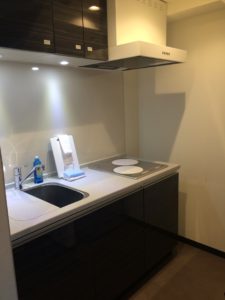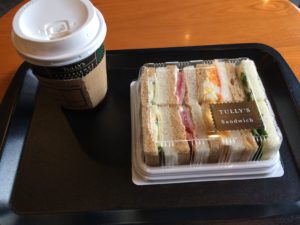A friend recently raved about an idea she read about in The Stranger where they rank on private kitchens. Private kitchens, you know, the place where you make food without other people’s germs getting in your way. Now don’t get me wrong, I’m a huge proponent of building community around food and co-housing and baugruppe and other things that reduce waste and increase connection between people. But Seattle does not have the infrastructure to support large numbers of people living with just a microwave, a tiny refrigerator and perhaps a burner or two. Trust me, I’ve done it where there is infrastructure. And then I tried here in Seattle. It was expensive and I gained a lot of weight.

Most of Seattle’s downtown core lacks access to healthy, reasonably priced food. Sure you can go to Whole Foods and select from their hot food bar. But if you aren’t careful to choose light food you suddenly find yourself at the checkout with a $20 charge (hint – broccoli is heavy!). And the mini-marts scattered here and there will charge you $2.99 for a 79 cent can of tomato sauce. And if you want to stock up on microwavable meals, the tiny refrigerators in these apartments mean that you have to choose carefully. Pizza? Forget it. So what do you do? Eat out at restaurants? Good luck finding a meal for under $15. And the reasonably priced choices are usually high fat, special occasion meals. Or if you want to be healthy, salad. And of course when you are hungry good intentions die and hello corndog and tater tots.

Contrast that with Tokyo where there is a minimart on every block with reasonably priced healthy food that you can pick up on your way home. Price-wise I found them to be even cheaper than the grocery stores (don’t quote me – it was a subjective feel). The heat and eat meals were always fresh and balanced. The sashimi (yes from 7-11) was better than you get at most sushi bars here. And I seriously miss their pre-packaged sandwiches. There are also many neighborhood restaurants that cater to people who don’t have kitchens with simple home-style meals. People say Tokyo is expensive, but not if you eat where local people do. For the equivalent of $8 I would have a full meal with a salad, a piece of fish or chicken or a noodle dish, a bowl of rice, and tea. And I didn’t feel uncomfortable eating alone because many people were doing the same. Some places even had a communal single diner table. Oh yeah, and no tax or tip had to be added to that $8.
Ok, so you get an apartment with one of these minimalist kitchens. Great. But what if you actually want to cook a meal? Many of these buildings don’t have a shared kitchen as was the case with the Belltown apartment I moved into when I got back to Seattle. It had a great library but no place to cook if you wanted to entertain guests in the winter (in the summer we had the bbq’s). And the places (usually fancier) that do have a community kitchen put all kinds of barriers in place such as paying a deposit to use the kitchen, registering in advance (who plans ahead?), oh and did we forget to tell you it’s a catering kitchen? So bring your own pots and pans and stuff. What? You don’t have room for them in your tiny kitchen? Here we can rent you storage space for big bucks.
What if buildings had real shared kitchens kind of like college dorms do? Perhaps one per floor? Or built around a quad concept? The kitchen would be fully stocked with appliances and pots and pans and avocado peelers and plates and everything like that. Residents could even contribute gadgets and stuff. Sure you would have to solve the hygiene issue. And it wouldn’t be suitable for everyone given allergies and cross contamination issues. Perhaps do it as a membership. Where it’s available but you have to become a member of the kitchen group to use it. And as part of that membership you agree to a variety of rules (decided on and managed by the community). That way those who don’t want to use it don’t have to maintain it. And the rules can vary to include things such as expectations for cleaning up after yourself, regular deep cleaning (done by the community or hired out), shared meals or not, replacement of broken items, etc…
Developers could try a variety of layouts and plans – shared kitchen(s) or partner with restaurants/deli’s for in house food or something completely different and creative. But if they really want to create livable spaces they should think about community and go beyond just trying to cram as many small apartments into each development for which they charge minutely lower but still exorbitant rents for and think about quality of life a bit too. Perhaps people will stay longer.
Seattle needs to add more inexpensive, “every day” food takeout options near the Link stations and in high density neighborhoods. More small groceries that don’t overcharge their captive audience. More cafeteria style eateries. And make eating alone easier and less stigmatizing.
What it comes down to is that the city needs to do more to support the tiny kitchen movement for it to be a feasible through zoning changes and programs to help guide and support businesses that could build out the infrastructure.
